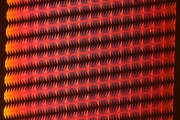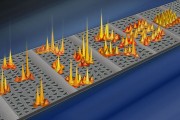 2016-03-04
2016-03-04
According to statistics, the majority of accidents occur at dusk or at night – poor visibility is often the trigger. Intelligent headlights adapt to the current traffic situation, and can be a remedy. In collaboration with industry partners, Fraunhofer researchers have developed a high-resolution illumination system with more than 1,000 LED pixels: It offers considerably more options for precise light distribution than previous solutions have and is also energy efficient.
Continue reading →
 2016-02-26
2016-02-26
Researchers from the Moscow Institute of Physics and Technology (MIPT) have for the first time experimentally demonstrated that copper nanophotonic components can operate successfully in photonic devices - it was previously believed that only gold and silver components have the required properties for this. Copper components are not only just as good as components based on noble metals, but, unlike them, they can easily be implemented in integrated circuits using industry-standard fabrication processes. "This is a kind of revolution - using copper will solve one of the main problems in nanophotonics," say the authors of the paper. The results have been published in the scientific journal Nano Letters.
Continue reading →
 2015-02-03
2015-02-03
A breakthrough by a team of researchers from UCLA, Columbia University and other institutions could lead to the more precise transfer of information in computer chips, as well as new types of optical materials for light emission and lasers.
Continue reading →
2014-07-10
The two German high-tech companies temicon GmbH and holotools GmbH join forces to expand their product portfolio in the area of micro and nanotechnologies. In the future they are going to operate under the corporate roof of temicon, continuing the well established brand “holotools” as their trademark for laser interference lithography. Both companies have been working together successfully over many years using complementary technologies in the production chain of high-tech components for optical, medical, solar and environmental applications.
Continue reading →
 2016-03-04
2016-03-04
 2016-02-26
2016-02-26
 2015-02-03
2015-02-03